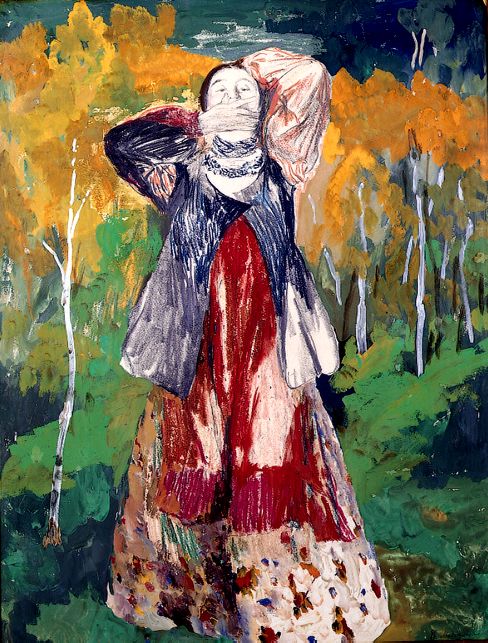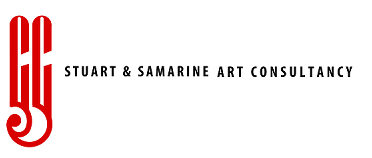Filip Maliavin: Rire etouffe

Maliavin, Filip Andreyevich (1869-1940)
A Suppressed Laugh
watercolour, gouache and crayon over pencil
63.5 by 49cm.
Born in the village of Kazanka on the Volga into an illiterate peasant family, Maliavin taught himself to draw at a young age. A neighbour who had become a monk on Mount Athos returned with him to the Holy Mountain, where the young Maliavin became a novice, and learned to paint icons in the monastery workshop. He continued to paint secular pictures for his own satisfaction. When Beklemishev, professor of sculpture at the Academy, happened to visit Athos on a pilgrimage, he was so impressed with the youth’s talent that he paid his passage to St. Petersburg, and for his studies at the Academy. He studied under Repin, and soon made a name for himself with his boldly executed and colourful depictions of peasant life. Perhaps as a result of his humble origins, he found himself as unofficial court painter of the Bolsheviks, and sketched many leaders (Lenin, Trotsky, Lunacharsky) in the Kremlin 1920-21. However, the following year he fled Soviet Russia, and settled in Nice. In the emigration, he reworked themes of his earlier period, but now suffused either with nostalgia, or bitterness. He happened to be in Brussels when the Nazis invaded, was arrested and nearly shot, but succeeded in persuading his captors he was simply an artist. Released and set off for Nice on foot. The journey took all his strength, and he died shortly after his return.
